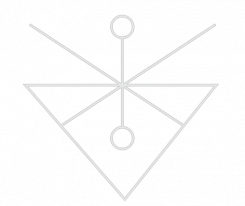La tessitura, è un atto stregonico che si affianca alla ritualistica Vanica.
Questo rituale (di filatura), ha lo scopo di creare un indumento che potrebbe essere utilizzato sia per aiutare, sia per far del male a chi lo indossa.
Nelle Saghe, spesso sono state lavorate delle “camicie” magiche da indossare durante una battaglia e/o un evento particolare.
Questi sono stati chiamati gørnings- takkr o “camicie” di Strega.
Gli esempi si possono trovare nella saga Eyrbyggja, quando Katla tesse una maglia a prova di ferita per il figlio Odd (cap. 18); oppure nella saga Vatnsdoela, dove Ljót ne tesse una per suo glio Hrolleifr (cap. 19); così come in molti altri «luoghi» della letteratura norrena.
La filatura è ben nota anche nella anche nella tradizione finlandese: una madre tesse spesso una camicia magica per proteggerei componenti del suo nucleo, contro il ferro, metallo temuto e mortale.
Un famoso tipo di tessitura, sempre di protezione, si registra dai Danesi, che attaccano il Belgio e la Francia settentrionale, nei secoli IX e X, nonché dai vichinghi sotto Sigifrid nelle isole britanniche nell’878, e dai manoscritti islandesi del XII e XIII secolo, dove viene narrato un episodio in cui è legato Sigurðr Hlöðvisson Dyri (la Stout), conte di Orkney, con il re Harald di Norvegia. In tutti questi racconti, lo stendardo magico ha il potere di terrorizzare.
La filatura di protezione e/o maledizione è sempre lavorata dalla madre o la sorella del guerriero in questione.
“La vittoria è stata sempre assicurata per l’uomo che possiede la bandiera realizzata per prima, anche se lo stesso era destinato a cadere in battaglia”
(Saga Uomini delle Orcadi, ch 6, 11, 14, 17; Njáls, ch 157; Lukman, ch 135, 150).
I colori spesso usati, in questo atto stregonico sono:
rosso, blu e verde, che per la nostra tradizione sono stati considerati particolarmente magici:
- rosso è il mistero del sacrificio, la comunicazione diretta con i Divini, il sangue sacro;
- blu rappresenta la regalità e la visceralità, il mistero della notte più cupa, il mantello della Strega dei Vani;
- verde è la terra del Miðgarð, patria della Strega, “oro ” dei Vani.
Creare un panno con questi colori era ritenuto indispensabile, e le tracce si manifestano ancora il tutto il folköl nord europeo; in particolare per la preparazione di infusi medicinali e trattamenti medici, l’uso del rosso costituiva una prassi stregonica.
Il filo rosso è stato utilizzato in applicazioni mediche, per intrecciare l’ombelico del neonato, per legare i pacchetti di erbe su parti del corpo, quando occorreva favorire la «guarigione» magica.
La parola olandese toverij, la parola tedesca zauber, e il termine inglese antico teafor, che significa «magia», sono legate alla parola norrena taufr, utilizzata anche per amuleto o un talismano: tutti questi termini sono derivati da una radice germanica che significa «rosso vermiglio».
Il rituale del Seiðr Staff che completa la tessitura della strega, fa parte della formula sciamanica che è tutt’ora in uso in Islanda del sud, e che il Vanatrú celebra di stagione in stagione.
Per approfondimenti:
Laugrith Heid, La Stregoneria dei Vani, Anaelsas edizioni.
Laugrith Heid, Kindirúnar, Le Rune della Stirpe, Il Grimorio Necromantico, anaelsas edizioni.
*Gli “share” senza citazione della fonte sono elemento di querela poiché si ledono gli elementi del copyright sanciti dalla legge italiana*
ENG



